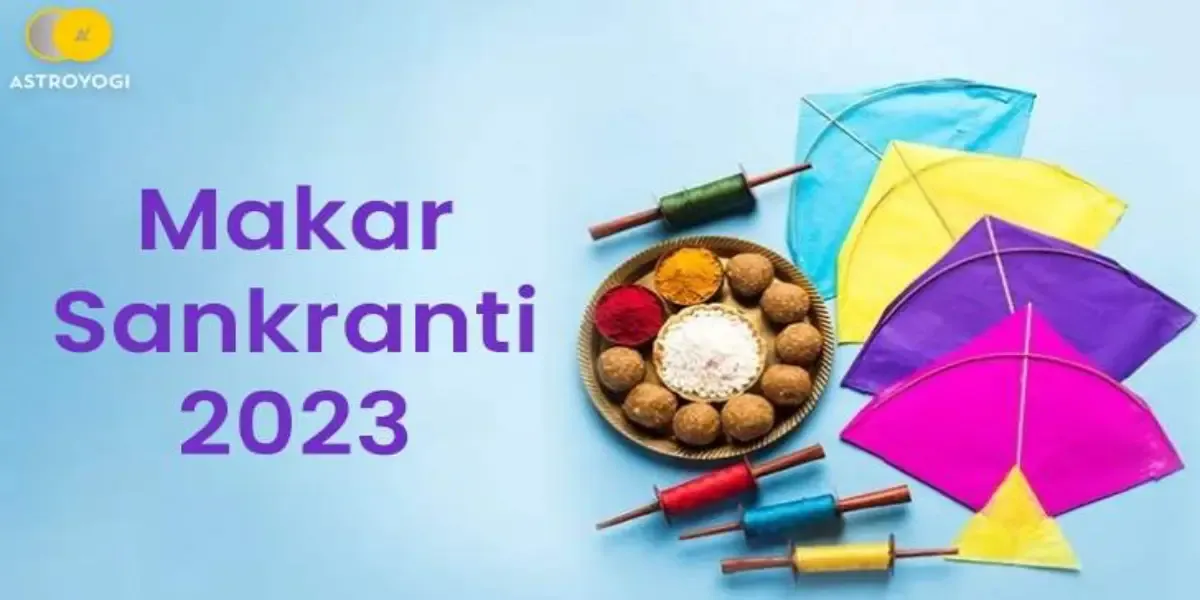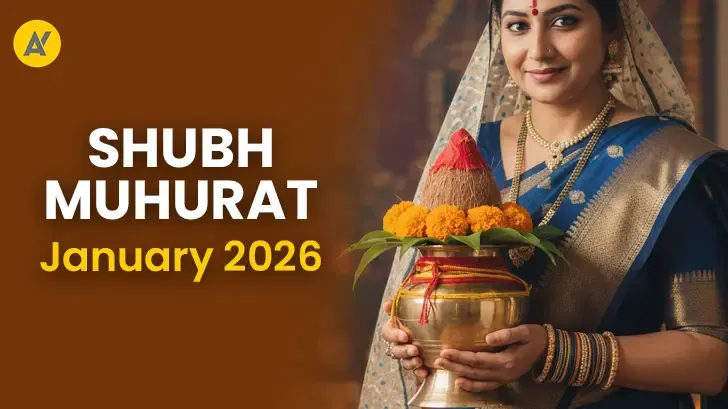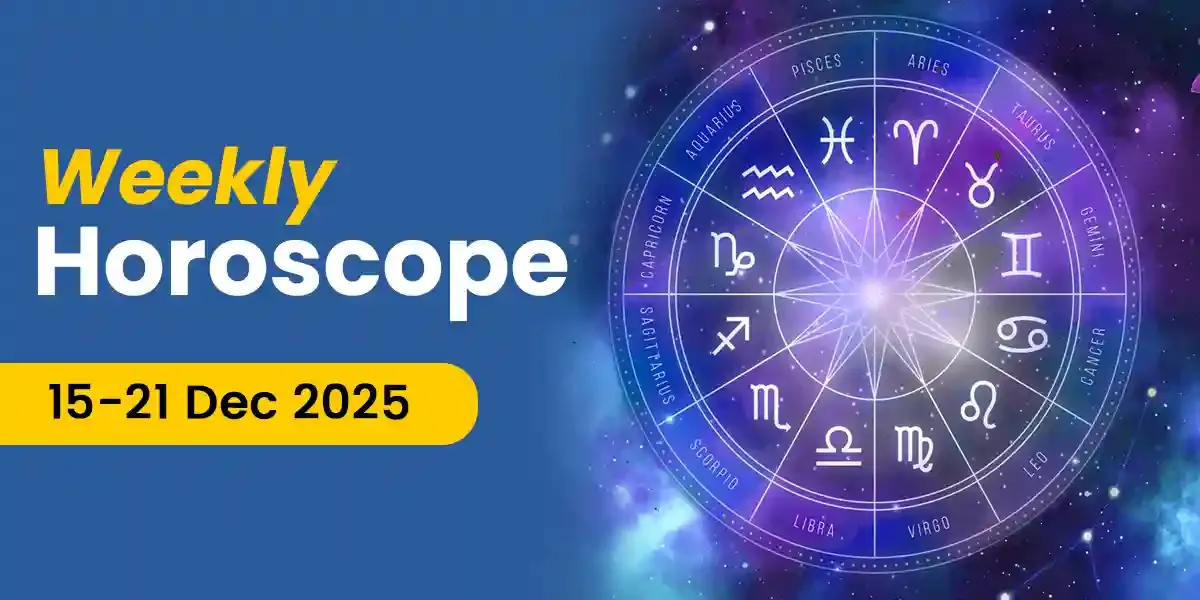
The Makar Sankranti festival is here, one of the most popular Hindu festivals observed across India! For those who are unaware, the festival honors the Sun. To make the most of this fortunate occasion, knowing how and when this festival is observed may be beneficial. So keep scrolling down to know more.
True to India’s diversely rich tradition, people celebrate many different festivals throughout the year—each with its own unique meaning and significance. India is home to a diverse population united by their belief in the country's cultural heritage. These festivals celebrate that heritage and offer everyone an opportunity to rejoice and celebrate. Every January, Hindus around the world celebrate Makar Sankranti. It's one of the most important festivals in India and honors Surya Dev or the Sun God.
Let’s discover more about this popular festival.
What Makes Makar Sankranti A Special Hindu Festival?
Makar Sankranti, also known as Maghi, is one of the most pious Hindu festivals. Moreover, this is one of the few religious Hindu festivals that follows the solar cycle. The Vedas define 'Sankranti' as the transmigration of the Sun from one Rashi or constellation of the zodiac sign to another. This is why there are twelve Sankranti in a year, with Makar Sankranti being the holiest. Makar Sankranti celebrates the arrival of warmer and longer days and bids adieu to the cold winter months. Because the Sun is in the Southern Hemisphere prior to Makar Sankranti, winter nights in India are longer, and days are shorter. But on this occasion, the Sun starts its journey toward the Northern Hemisphere. The days grow longer, and the nights get shorter as a result of this phenomenon. The Sun's ascent into the Northern Hemisphere is celebrated with much fervor by devotees.
The Sun is revered as a divine and powerful deity in Hinduism. Therefore, the Makar Sankranti festival is dedicated to the devotion of Surya Dev or the Sun God. It is the beginning of the harvest season. The Sun moves from the Southern or Dakshinayana to the Northern or Uttarayana Hemisphere during the harvest festival, bringing about a change in the season. This period is known as Uttarayana and is considered extremely auspicious. The Dakshinayana represents the night and all that is negative, whereas the Uttarayana represents the day and all that is positive. This festival also heralds the end of the long, cold winter season and the arrival of spring.
For Hindu devotees, this particular harvest festival is significant both spiritually and practically. People worship the Sun God in various ways on the significant occasion of Makar Sankranti to show gratitude. Any donations or honorable deeds carried out during this time are considered fruitful and advantageous for you.
You may also like to read 👉 7 Easy Tips To Remove Negative Energy from Home
When is Makar Sankranti 2023?
The Hindu Lunar calendar is used for Indian festivals; however, Makar Sankranti is based on the Solar Calendar. This is the reason why this particular festival is typically observed on the same day each year. According to the Gregorian calendar, Makar Sankranti falls every year on the 14th or 15th of January. The Makar Sankranti 2023 date and time are listed below as per the Indian Standard Time.
Makar Sankranti 2023 - 15th January 2023 (Sunday)
Makar Sankranti Punya Kala - 07:15 AM to 05:46 PM
Makar Sankranti Maha Punya Kala - 07:15 AM to 09:00 AM
What Rituals Are Associated With Makar Sankranti?
People celebrate the Makar Sankranti festival by taking a holy bath in water bodies and offering things to Lord Surya and Shani. People also fly kites on this day. However, there are many other traditions that you should keep in mind while celebrating Makar Sankranti. Here are some significant Makar Sankranti rituals and traditions that add to the festive atmosphere on this day.
Every ritual or practice observed during Makar Sankranti expresses gratitude to the Sun since the Sun is what makes life possible on earth. The Sun God is worshiped for bestowing abundant harvests and nurturing livestock. Along with this, cattle, particularly oxen and bulls, are revered for their role in plowing the fields.
On this day, many people take a ritual bath in sacred rivers such as the Ganga, Yamuna, Godavari, and Krishna. They chant mantras as they bathe. This is done to cleanse you of all of your past sins. This custom of taking a bath in the water on this particular day is very significant in Northern India. Thousands of people flock to Hindu pilgrimage sites such as Haridwar, Prayagraj, and Varanasi to take a sacred dip in the Ganges.
According to the ancient scriptures, one should rise slightly before sunrise and bathe on this particular day. This ensures that you have a good start to the day. After bathing, one should perform Arghya (pouring water towards the Sun) and chant the Gayatri Mantra. Doing this is considered to be beneficial.
On this occasion, kite flying is crucial, especially in Gujarat. Kites are all over the sky on this particular day.
Donating Gud (jaggery) and Til (sesame seeds) on Makar Sankranti is considered very auspicious. On this day, people exchange jaggery and sesame seeds and donate them to the needy and poor. Moreover, food made with jaggery and sesame seeds is said to keep the body warm and provide oil, which is essential during the chilly winter months when the body's moisture levels drop. Therefore, food delicacies made of jaggery and sesame seeds are exchanged on this occasion. . Sweets made from sesame seeds are thought to contain ‘Satvik' elements. On this day, it is widely believed that those who engage in charitable activities to help the poor and needy will be blessed with good fortune.
Makar Sankranti celebrations are incomplete without the mention of delectable food. This festival is a time to eat freshly harvested food grains after offering them to the Gods. According to Ayurveda, consuming Khichdi during this time can help your body prepare for the transition from winter to spring. Women prepare Laddoos and other sweets made of Gud and Til for Makar Sankranti. On this occasion, family and friends are served Gajak and Kheer, among other things.
What is The Astrological Significance of Makar Sankranti?
The word "Makar or Makara" means "Capricorn." The day of Makar Sankranti marks the Sun's entry into "Makara Raashi" or the "zodiac of Capricorn." Makar Sankranti festival celebrates the changing of the seasons. In terms of astrology, it causes a symbolic change to the planetary houses. During this time of year, the Sun moves from Sagittarius to Capricorn. The Sun transits through the twelve zodiac signs every year, spending one month in each. The transit or Sankranti that occurs in January is considered the most auspicious as per the Hindu calendar.
What are The Different Ways of Celebrating Makar Sankranti?
Makar Sankranti is a massive harvest festival celebrated across the country. This festival is largely observed in the Indian states of Maharashtra, Goa, Karnataka, Andhra Pradesh, Telangana, and Rajasthan. This festival is also celebrated throughout the Indian subcontinent by Hindu devotees. In each state of India, the festival is known by a different name. The festival has its own religious traditions, customs, and rituals that vary depending on where it is held. For instance, in Goa, Maharashtra, West Bengal, Andhra Pradesh, Telangana, and Karnataka, this holiday is known as Makar Sankranti and Poush Sankranti, while in Northern India, it is known as Maghi. People in Tamil Nadu celebrate it as Pongal, in Assam as Bhogali Bihu or Magh Bihu, in Gujarat as Uttarayan, and in Uttar Pradesh as Khichdi.
Here are some of the ways Makar Sankranti is observed in different states of India.
In Gujarat, this festival is well-known as Uttarayan. It lasts for two days. On this occasion, the newly harvested grains are used to make Khichdo and Undhiyu, which are enjoyed by all. Another activity on this day is flying kites, and major cities like Surat, Vadodara, and Ahmedabad host numerous national and international level kite-flying competitions. It is also common for elders to give gifts to younger family members. Uttarayan is a very auspicious day because it is dedicated to the Sun God.
The day is celebrated as Khichdi in Uttar Pradesh. On this day, people take a holy bath in the Ganga. Sesame and Khichdi are given to the needy. On this day, the popular Magh Mela begins in Prayagraj (formerly Allahabad).
Makar Sankranti is known as Pongal in Tamil Nadu and other parts of South India. This incredible multi-day event commemorates the worship of the harvest God. After offering prayers to the Sun God and performing puja for the earth, and sickles, farmers harvest paddy. Fresh rice is brought home, and sweets made of rice, milk, and pulses are then cooked and offered to the deity first and then to everyone else. The holiday is observed in the hope that everyone's homes will be filled with wealth and prosperity. This is undoubtedly one of the most important festivals in Southern India.
In West Bengal, Makar Sankranti is observed as Poush Sankranti. On this occasion, the famous Ganga Sagar Mela is held. A large number of people bathe in the holy water at the Ganga Sagar, which is located where the River Ganga and the Bay of Bengal converge. Traditional Bengali sweets like Patali and Khejurer Gur are among the most popular foods enjoyed during this festival.
In Punjab, the eve of Makar Sankranti is known as Lohri. On this occasion, a massive bonfire is lit, and people perform Puja around the sacred fire by throwing peanuts, popcorn, and other items into it. This is followed by traditional feasts and celebrations with family and friends.
Due to the enormous religious and spiritual significance of Makar Sankranti, this occasion is of utmost importance to everyone. This occasion represents a new beginning and a fresh start, allowing a new season to brighten one's life. This special occasion allows people to express their gratitude for the abundance and harmony of the year.
Astroyogi wishes you a Happy Makar Sankranti!
If you would like to learn more about Makar Sankranti 2023 or have any questions about astrology in general, get in touch with Astroyogi astrologers right away via Call or Chat.
Our in-house team of writers comprises of vibrant, like-minded, and curious souls who are passionate about helping people find joy and motivation through the magic of words. Our writers are keen on using their skills to make the study of divination sciences a guiding tool in people's lives. They hold expertise in writing on a myriad of topics related to Indian Astrology, Spirituality, Planetary Movements, Vastu Shastra, Numerology, and Tarot among several others. The Astroyogi team aims to write articles that can help the readers lead a life of peace and tranquility whilst enjoying the many ups and downs of life!


































